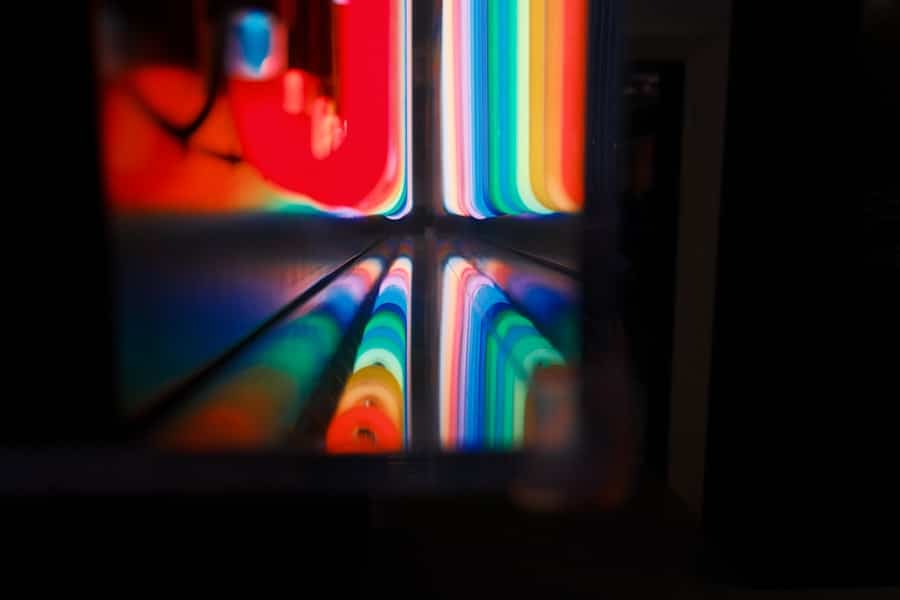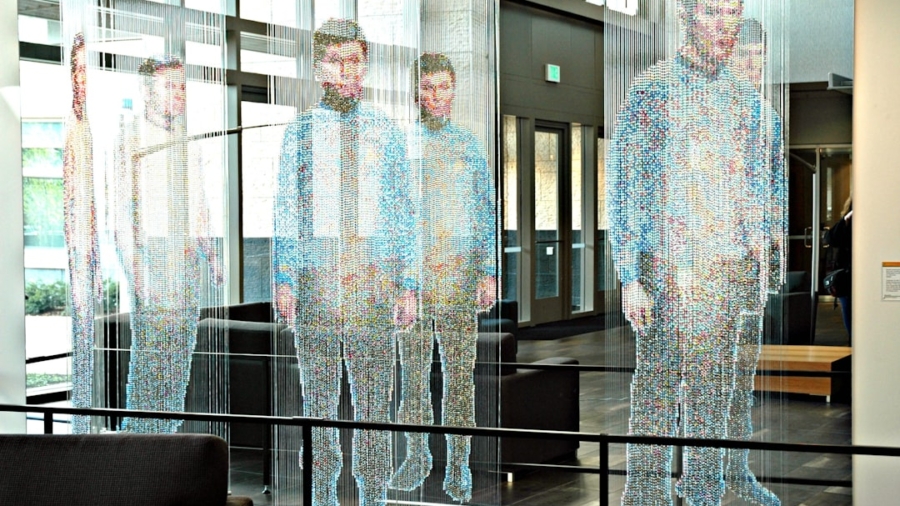Holographic displays have emerged as a groundbreaking technology that transcends the limitations of traditional flat screens. The concept of holography dates back to the 1940s, when physicist Dennis Gabor first introduced the idea, but it wasn’t until the late 20th century that advancements in laser technology and digital imaging began to make practical applications possible. The rise of holographic displays can be attributed to a confluence of factors, including the increasing demand for immersive experiences in entertainment, education, and advertising.
As consumers seek more engaging ways to interact with digital content, the allure of three-dimensional visuals has propelled holographic technology into the spotlight. In recent years, several companies have made significant strides in developing holographic displays that are not only visually stunning but also commercially viable. For instance, Microsoft’s HoloLens and Magic Leap’s One headset have showcased how augmented reality can blend digital elements with the real world, creating a holographic experience that captivates users.
These devices utilize advanced sensors and optics to project images that appear to float in space, allowing for interaction in ways that flat screens simply cannot replicate. As the technology continues to evolve, it is becoming increasingly integrated into various sectors, paving the way for a future where holographic displays are commonplace.
Key Takeaways
- Holographic displays are gaining popularity due to their ability to create 3D images without the need for special glasses.
- Holographic displays offer advantages over flat screens, including better depth perception, reduced eye strain, and enhanced visual appeal.
- Holographic displays have applications in various industries, including healthcare, education, entertainment, and automotive, for tasks such as medical imaging, immersive learning experiences, and augmented reality.
- Holographic displays work by using light diffraction to create 3D images that appear to float in space, providing a more immersive viewing experience.
- Challenges and limitations of holographic displays include limited viewing angles, high production costs, and the need for specialized content creation.
Advantages of Holographic Displays over Flat Screens
One of the most significant advantages of holographic displays is their ability to present images in three dimensions, providing depth perception that flat screens cannot offer. This depth allows viewers to experience content in a more natural and intuitive manner. For example, in medical training, holographic displays can project 3D models of human anatomy, enabling students to visualize complex structures from multiple angles.
This immersive learning experience enhances understanding and retention compared to traditional 2D images or videos. Moreover, holographic displays facilitate interactive experiences that engage users on a deeper level. Unlike flat screens, which typically require a fixed viewing angle, holograms can be viewed from various perspectives without losing clarity or detail.
This characteristic is particularly beneficial in collaborative environments, such as design studios or engineering firms, where multiple stakeholders can examine a 3D model simultaneously from different angles. The ability to manipulate and interact with holographic content fosters creativity and innovation, making it an invaluable tool across numerous fields.
Applications of Holographic Displays in Various Industries

The applications of holographic displays span a wide range of industries, each leveraging the technology’s unique capabilities to enhance their operations and offerings. In the entertainment sector, for instance, holograms have been used to create lifelike performances of deceased artists, such as Tupac Shakur’s appearance at Coachella in 2012. This not only captivated audiences but also opened up new avenues for live performances and virtual concerts, allowing fans to experience their favorite artists in an entirely new way.
In the realm of retail, companies are beginning to adopt holographic displays for advertising and product demonstrations.
For example, car manufacturers have utilized holographic displays at auto shows to present their latest models in an engaging manner.
By allowing potential buyers to explore the vehicle’s features interactively, these displays enhance customer engagement and drive sales.
How Holographic Displays Work
Holographic displays operate on principles rooted in optics and light manipulation. At their core, they utilize interference patterns created by coherent light sources, such as lasers, to produce three-dimensional images. When light reflects off an object and is captured by a recording medium, it creates a hologram—a photographic representation of the light field emanating from that object.
When this hologram is illuminated by a laser or another coherent light source, it reconstructs the original light field, allowing viewers to perceive a 3D image. There are several methods for creating holographic displays, including laser-based systems and digital light processing (DLP). Laser-based systems often employ spatial light modulators (SLMs) that can manipulate light at high speeds to create dynamic holograms.
DLP technology uses micro-mirrors to project images onto a screen or directly into space, enabling real-time rendering of 3D content. These technologies work together to create lifelike visuals that can be viewed without special glasses or headgear, making them more accessible for everyday use.
Challenges and Limitations of Holographic Displays
Despite their impressive capabilities, holographic displays face several challenges and limitations that hinder widespread adoption. One significant hurdle is the complexity and cost associated with producing high-quality holograms. The technology requires sophisticated equipment and precise calibration to achieve the desired visual fidelity.
As a result, many current holographic systems are prohibitively expensive for average consumers or small businesses. Additionally, there are technical limitations related to resolution and brightness. While advancements have been made in improving these aspects, many holographic displays still struggle to match the clarity and vibrancy of high-definition flat screens.
This discrepancy can lead to viewer fatigue or dissatisfaction when transitioning between different display types.
The Future of Holographic Displays

The future of holographic displays appears promising as ongoing research and development continue to push the boundaries of what is possible with this technology. Innovations in materials science and optics are paving the way for more compact and efficient holographic systems. For instance, researchers are exploring the use of nanomaterials and metasurfaces to create thinner and lighter displays that maintain high resolution and brightness levels.
Moreover, as artificial intelligence (AI) becomes increasingly integrated into various technologies, it holds the potential to enhance holographic displays further. AI algorithms can optimize image rendering in real-time based on user interactions and environmental conditions, resulting in a more seamless experience. This integration could lead to applications in fields such as telemedicine, where doctors could use holograms for remote consultations or surgeries with enhanced precision.
Comparing Costs of Holographic Displays and Flat Screens
When evaluating the costs associated with holographic displays versus flat screens, it is essential to consider both initial investment and long-term value. Currently, holographic displays tend to be significantly more expensive than traditional flat screens due to the advanced technology required for their production. High-quality holographic systems can range from several thousand dollars to tens of thousands, depending on their capabilities and intended applications.
In contrast, flat screens have become increasingly affordable over the years due to mass production and widespread adoption. Consumers can find high-definition televisions at competitive prices, making them accessible for everyday use. However, while flat screens may offer lower upfront costs, they lack the immersive experience provided by holographic displays.
As technology advances and production methods improve, it is anticipated that the costs associated with holographic displays will decrease over time, making them more competitive with traditional screens.
Consumer Adoption of Holographic Displays
Consumer adoption of holographic displays is gradually increasing as awareness grows about their potential applications and benefits. Early adopters in sectors such as gaming and entertainment have already begun integrating this technology into their offerings. For instance, gaming companies are exploring ways to create immersive experiences that allow players to interact with virtual environments in real-time through holograms.
However, widespread consumer adoption will depend on several factors beyond just technological advancements. Education plays a crucial role in familiarizing potential users with how holographic displays work and their advantages over traditional screens. Marketing efforts that highlight practical applications—such as virtual meetings or enhanced shopping experiences—can help drive interest among consumers who may be hesitant about investing in new technology.
As manufacturers continue to innovate and improve accessibility, it is likely that we will see an increase in consumer interest and adoption rates for holographic displays across various sectors. The combination of enhanced user experiences and decreasing costs will ultimately determine how quickly this technology becomes a staple in everyday life.
In the rapidly evolving world of display technology, holographic displays are emerging as a groundbreaking alternative to traditional flat screens. These advanced displays offer immersive, three-dimensional visuals that are set to revolutionize how we interact with digital content. For those interested in the broader context of technological advancements and trends, an insightful article to explore is Top Trends on LinkedIn 2023. This article delves into the latest trends shaping the digital landscape, providing a comprehensive overview of innovations that are influencing various industries, including display technology.
FAQs
What are holographic displays?
Holographic displays are a type of technology that creates three-dimensional images by using light diffraction to create the illusion of depth and movement.
How are holographic displays different from flat screens?
Holographic displays differ from flat screens in that they create three-dimensional images that appear to float in space, while flat screens display two-dimensional images on a flat surface.
What are the advantages of holographic displays over flat screens?
Holographic displays offer the advantage of creating more immersive and realistic visual experiences, as well as the ability to view images from multiple angles without the need for special glasses.
How are holographic displays being used to replace flat screens?
Holographic displays are being used in various industries, such as advertising, entertainment, and education, to provide more engaging and interactive visual experiences that can replace traditional flat screens.
What are the challenges in replacing flat screens with holographic displays?
Challenges in replacing flat screens with holographic displays include the cost of the technology, the need for content to be specifically designed for holographic display, and the limitations of current holographic display technology in terms of resolution and brightness.

